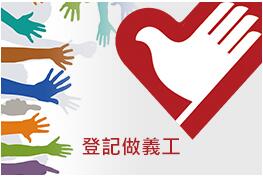About Rare DiseasesRare Disease Wiki

Osteogenesis Imperfecta (OI)
Name of disease:
Osteogenesis Imperfecta (OI)ICD-10 diagnosis code:
Q78.0Causes:
- A mutation or change in a gene causes OI.
- Genes carry information that determines which features are passed to the patient from his/her parents. Human beings have two copies of most genes, one from each parent.
- In the most common forms, people with OI have a gene that carries incorrect instructions in one copy of the gene for making collagen, a substance that makes bones strong. The gene causes the body to make insufficient collagen, or the collagen does not work properly. This leads to weak bones that break easily.
- Most people with OI inherit this gene from one parent, or it may occur for the first time in the person.
- In other forms, the child has to inherit a mutation in a gene from both parents. Parents do not have to have OI to pass on the gene that causes it. Sometimes neither parent passes on the gene. Instead, the gene stops working properly on its own before the child is born.
Mode of inheritance:
- There are 19 different types of OI. These vary greatly both within and between types. They are based on the type of inheritance and signs and symptoms.
- Many people with type I or type IV OI inherit a mutation from a parent who has the disorder.
- Most infants with more severe forms of OI (such as type II and type III) have no history of the condition in their family. In these infants, the condition is caused by sporadic mutations in the COL1A1 or COL1A2 gene.
- Type V is also inherited in an autosomal dominant pattern.
- Less commonly, OI has an autosomal recessive pattern of inheritance. Autosomal recessive inheritance means two copies of the gene in each cell are altered. The parents of a child with an autosomal recessive disorder typically are not affected but each carries one copy of the altered gene. Types VI through XVIII follow this pattern of inheritance.
Prevalence:
1 in 15,000 to 20,000 live birthsDiagnosis:
Doctors may diagnose OI by:- Asking about family and medical history
- Completing a physical exam
- Ordering x-rays and bone density and genetic blood tests
Age of onset:
At birthCommon signs and symptoms:
- People with OI have weak, brittle bones. Some people with OI may have only a few broken bones over their lifetime. Others may have hundreds, including broken bones that occur before birth.
- Other symptoms include:
- Malformation or bowing of long bones
- Small stature
- Skin that bruises easily
- Loose joints
- Weak muscles
- Whites of the eyes that look blue, purple, or grey
- A triangular shaped face
- A rib cage shaped like a barrel
- A curved spine
- Collapse or compression of the vertebrae in the spine
- Brittle, misshapen, or discoloured teeth
- Malocclusion of teeth
- Hearing loss
- Breathing problems
- A deformed hip joint in which the neck of the femur is bent downward, a condition called coxa vara
- Joint contractures (a joint stays in a permanently bent or straightened position)
Available treatment (medicinal and non-medicinal):
- There is no cure for OI.
- Treatments for preventing or correcting symptoms may include:
- Bisphosphonate medicines that help to strengthen bones and prevent fracture
- Care of fractures. The lightest possible materials are used to cast fractured bones.
- Orthopaedic treatment may include bracing and splinting.
- Metal rods are inserted to help stabilise and prevent deformities of long bones.
- Dental procedures. Treatments including capping teeth, braces, and surgery may be needed.
- Physical and occupational therapy
- Assistive devices. Wheelchairs and other custom-made equipment may be needed.
Disease management tips:
- Avoid fractures. If a baby has medium to severe OI, he/she needs to be picked up, diapered, and dressed very carefully. His or her position should be changed throughout the day.
- Avoid infection. The baby may be more likely to get colds and other respiratory infections and may get sicker with an infection. Make sure the baby has all vaccines. During the cold and flu season, stay away from crowds.
- Weight management. When the child gets older, he or she may gain weight because of the decreased physical activity.
- Regular medical and dental checkups.
References:
- https://www.cdek.liu.edu/icd10/Q78.0/
- https://www.niams.nih.gov/health-topics/osteogenesis-imperfecta
- https://www.niams.nih.gov/health-topics/osteogenesis-imperfecta/diagnosis-treatment-and-steps-to-take
- https://medlineplus.gov/genetics/condition/osteogenesis-imperfecta/#inheritance
- https://www31.ha.org.hk/hkch/Patients/DiseaseInfo/Osteogenesis-Imperfecta
- https://www.hopkinsmedicine.org/health/conditions-and-diseases/osteogenesis-imperfecta



